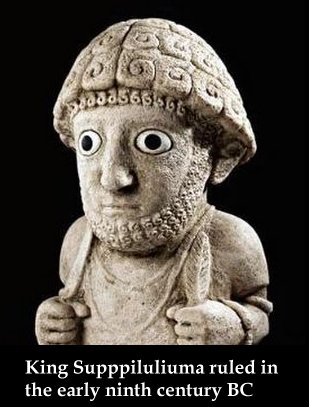3,000-Year-Old Female Statue Unearthed In Turkey
AncientPages.com - A beautifully carved head and upper torso of a female figure have been discovered at the archaeological site of Tayinat in southeast Turkey near the Syrian border.
The remains are made of basalt and measure 1.1 meter long and .7 meters wide. It suggests the full figure of the statue would have been four to five meters high.
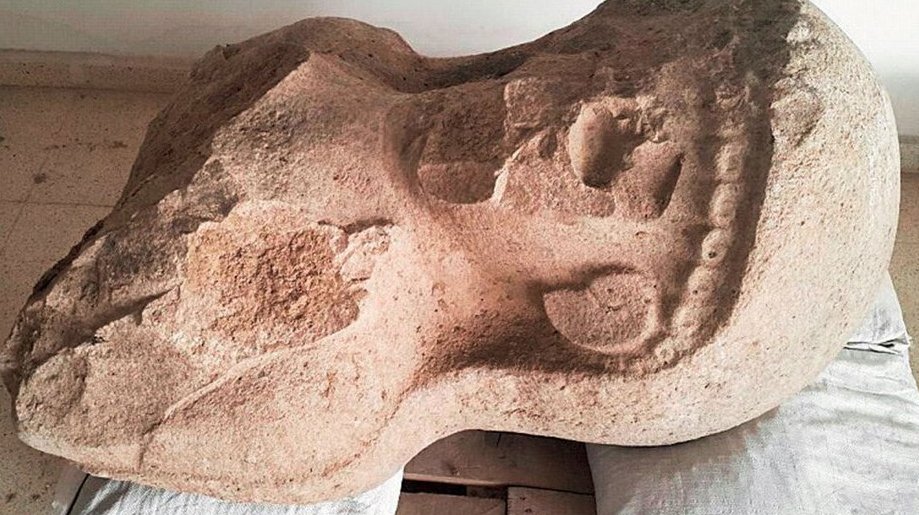
This statue was uncovered at a citadel gate complex in Turkey by U of T archaeologists leading the Tayinat Archaeological Project (photo courtesy of the Tayinat Archaeological Project)
The preserved parts of the statue are largely intact, although the face and chest appear to have been intentionally - possibly ritually - defaced in antiquity.
The lower body is missing. The statue was found within a monumental gate complex that would have provided access to the upper citadel of Kunulua, later Tayinat, which was the capital of the Iron Age Neo-Hittite Kingdom of Patina (ca. 1000-738 BC).
The site is approximately 75 km west of the Syrian city of Aleppo.
"Her striking features include a ring of curls that protrude from beneath a shawl that covers her head, shoulders and back," says Timothy Harrison, professor of Near Eastern Archaeology at the University of Toronto (U of T) and director of U of T's Tayinat Archaeological Project (TAP).
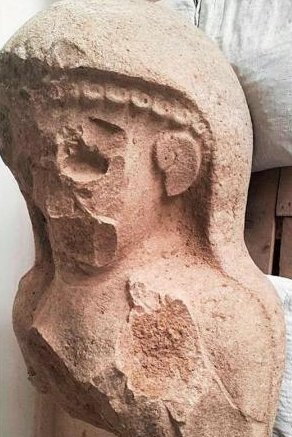
Archaeological works have been conducted in the area since 1999.
Harrison explained that "the statue was found face down in a thick bed of basalt stone chips that included shard-like fragments of her eyes, nose and face, but also fragments of sculptures previously found elsewhere within the gate area, including the head of the Neo-Hittite King Suppiluliuma that was discovered in 2012."
“The recovery of these tiny fragments will make it possible to restore much if not all of the face and upper body of the original figure.
That parts of these monumental sculptures have been found deposited together, suggests there may have been an elaborate process of interment or decommissioning as part of their destruction," according to Harrison.
The identity of the female figure has not yet been determined, but the archaeological team has some ideas. However, it is possible that she is a representation of Kubaba, divine mother of the gods of ancient Anatolia.
“There are stylistic and iconographic hints that the statue represents a human figure, possibly the wife of King Suppiluliuma, or even more intriguingly, a woman named Kupapiyas, who was the wife -- or possibly mother -- of Taita, the dynastic founder of ancient Tayinat."
King Supppiluliuma ruled in the early ninth century BC, was named after a famed Bronze Age Hittite warrior and statesman who challenged the then-dominant Egyptian Empire for control of the lands between the Mediterranean and the Euphrates River.
Two inscribed monuments carved in Hieroglyphic Luwian, the ancient language of the Hittites, found near Hama in Syria more than 50 years ago, provide a description of Kupapiyas, the only named female known from this region in the early part of the first millennium BC.
She lived for more than 100 years, and appears to have been a prominent matriarchal figure, though no memory of her is preserved in any historical sources for the first millennium BC.
"The discovery of this statue raises the possibility that women played a more prominent role in the political and religious lives of these early Iron Age communities than the existing historical record might suggest," Harrison said.
The statue also provides valuable insight into the innovative character and cultural sophistication of the indigenous Iron Age cultures that emerged in the eastern Mediterranean following the collapse of the great civilized powers of the Bronze Age at the end of second millennium BC.
AncientPages.com
References:
More From Ancient Pages
-
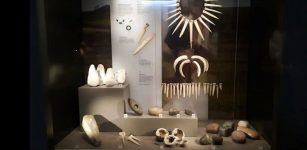 Ancient Goldsmith’s Toolkit Discovered Near Stonehenge
Archaeology | Dec 16, 2022
Ancient Goldsmith’s Toolkit Discovered Near Stonehenge
Archaeology | Dec 16, 2022 -
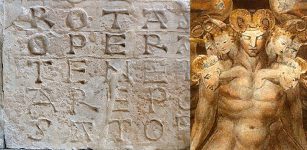 Sator Square: Mysterious Ancient Magical Word Puzzle Remains Unsolved
Ancient Symbols | Apr 18, 2018
Sator Square: Mysterious Ancient Magical Word Puzzle Remains Unsolved
Ancient Symbols | Apr 18, 2018 -
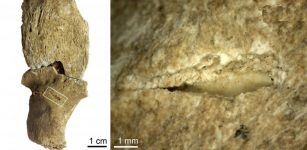 Jebel Sahaba: Analysis of 13,000-Years-Old Bones Reveals Prehistoric Violent Raids But Not A Single Armed Conflict
Archaeology | May 27, 2021
Jebel Sahaba: Analysis of 13,000-Years-Old Bones Reveals Prehistoric Violent Raids But Not A Single Armed Conflict
Archaeology | May 27, 2021 -
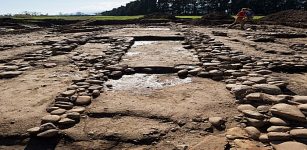 Sanctuary Of God Mithra And His Mysterious Religion Unearthed In Corsica
Archaeology | Mar 2, 2017
Sanctuary Of God Mithra And His Mysterious Religion Unearthed In Corsica
Archaeology | Mar 2, 2017 -
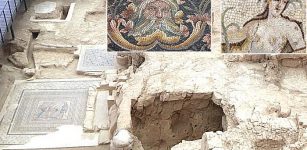 Rock-Cut Chambers In “House of Muses” Of Zeugma, Home To Numerous Mosaics
Archaeology | Jul 27, 2021
Rock-Cut Chambers In “House of Muses” Of Zeugma, Home To Numerous Mosaics
Archaeology | Jul 27, 2021 -
 On This Day In History: Franco-Mexican War – Mexico City Captured By French Troops – On June 7, 1863
News | Jun 7, 2016
On This Day In History: Franco-Mexican War – Mexico City Captured By French Troops – On June 7, 1863
News | Jun 7, 2016 -
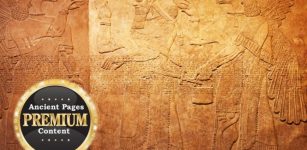 Mysterious Sumerian Star Tablet And Strange Divine Omens – Communication With The Gods – Part 2
Ancient Mysteries | Feb 18, 2021
Mysterious Sumerian Star Tablet And Strange Divine Omens – Communication With The Gods – Part 2
Ancient Mysteries | Feb 18, 2021 -
 Fascinating Medieval Knight Armor History
Featured Stories | Oct 23, 2018
Fascinating Medieval Knight Armor History
Featured Stories | Oct 23, 2018 -
 Satellite Images Of 66 New Roman Army Sites Show More Clues About One Of The Empire’s Most Infamous Conflicts
Archaeology | Dec 23, 2020
Satellite Images Of 66 New Roman Army Sites Show More Clues About One Of The Empire’s Most Infamous Conflicts
Archaeology | Dec 23, 2020 -
 Incredible Treasure Discovered In The Secret Chamber Of The Great Pyramid 1,200 Years Ago May Offer Proof Of Long-Lost Scientific Knowledge
Ancient Mysteries | Dec 31, 2018
Incredible Treasure Discovered In The Secret Chamber Of The Great Pyramid 1,200 Years Ago May Offer Proof Of Long-Lost Scientific Knowledge
Ancient Mysteries | Dec 31, 2018 -
 Hidden Manuscripts Reveal Ancient Sacred Wisdom Of The Gods And Surprises
Ancient Mysteries | Mar 23, 2019
Hidden Manuscripts Reveal Ancient Sacred Wisdom Of The Gods And Surprises
Ancient Mysteries | Mar 23, 2019 -
 Draugr – Vikings Feared This Ugly Living Dead With Prophetic Visions
Featured Stories | May 24, 2020
Draugr – Vikings Feared This Ugly Living Dead With Prophetic Visions
Featured Stories | May 24, 2020 -
 1,000-Year-Old Native American Canoe Recovered From A North Carolina Lake
Archaeology | Apr 20, 2023
1,000-Year-Old Native American Canoe Recovered From A North Carolina Lake
Archaeology | Apr 20, 2023 -
 Cosimo di Giovanni de’ Medici – Exile Of The Generous, Intelligent Banker Caused Fury In Renaissance Florence
Featured Stories | Apr 7, 2021
Cosimo di Giovanni de’ Medici – Exile Of The Generous, Intelligent Banker Caused Fury In Renaissance Florence
Featured Stories | Apr 7, 2021 -
 2,000-Year-Old Rare Sarcophagus With Human Remains Discovered In Rock-Cut Cave In India
Archaeology | Jan 18, 2018
2,000-Year-Old Rare Sarcophagus With Human Remains Discovered In Rock-Cut Cave In India
Archaeology | Jan 18, 2018 -
 Huge Mass Grave With Remains Of Pirate Black Sam’s Crew Discovered In North America
Archaeology | Apr 3, 2018
Huge Mass Grave With Remains Of Pirate Black Sam’s Crew Discovered In North America
Archaeology | Apr 3, 2018 -
 Why Were Neolithic Houses Always Built Counterclockwise?
Archaeology | Jan 13, 2020
Why Were Neolithic Houses Always Built Counterclockwise?
Archaeology | Jan 13, 2020 -
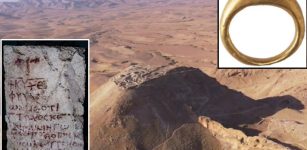 Byzantine Greek Inscription Of Psalms 86 Found In Hyrcania
Archaeology | Sep 29, 2023
Byzantine Greek Inscription Of Psalms 86 Found In Hyrcania
Archaeology | Sep 29, 2023 -
 Cardinal Richelieu ‘Red Eminence’ – One Of The Greatest Politicians In French History
Featured Stories | Oct 26, 2018
Cardinal Richelieu ‘Red Eminence’ – One Of The Greatest Politicians In French History
Featured Stories | Oct 26, 2018 -
 Krampus Celebrations Are Becoming Dangerous – Historian Warns
Ancient Traditions And Customs | Dec 10, 2019
Krampus Celebrations Are Becoming Dangerous – Historian Warns
Ancient Traditions And Customs | Dec 10, 2019

